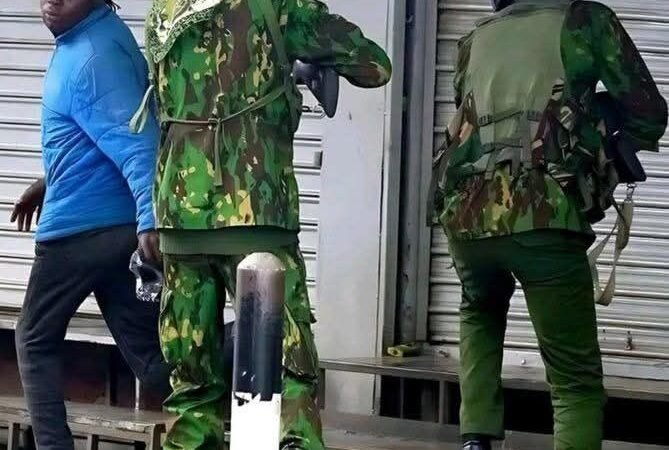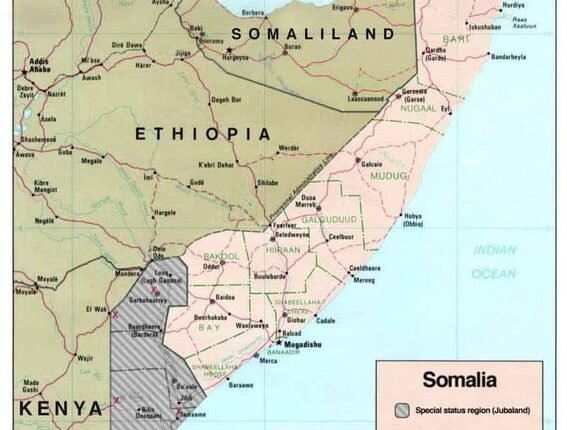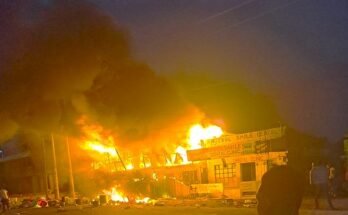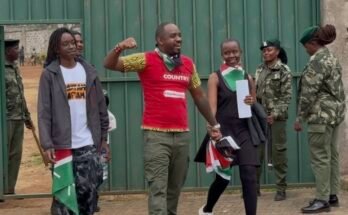In June 2025, the streets of Nairobi flowed red with anger, outrage, and calls for justice and reform. Among the thousands of protesters calling for economic reform and accountability, a senseless life was lost. Boniface Kariuki, a street vendor making a living in the capital city center, was killed by police bullets.
His death has, however, turned him into a national symbol of grief and protest. A simple placard reading “BONIFACE KARIUKI” is now a common feature at rallies, candlelit protests, and online posts. It symbolizes not only the man who lost his life, but also all the countless Kenyans who are voiceless, invisible, and vulnerable to those same powers that are meant to safeguard them.
Boniface Kariuki was no politician, celebrity, or entrepreneur. He was a hardworking street vendor, one of more than Kenya’s 80% informal sector workers who are the backbone of Kenya’s workforce. Like many others, he fought through each day trying to feed his family amidst inflation, outrageous government taxation, and minimal job prospects.
That June day, Boniface marched with thousands of fellow citizens to protest in a peaceful demonstration of the government’s economic policies. A democratic demonstration of discontent ended in tragedy. Witnesses claim police shot live rounds into the throngs, and Boniface was among them, shot in the midst of the chaos. He died immediately.
His family, grieving, say that he was not a political agitator he merely sought a decent life for his children. His story is now emblematic of a broken system, in which the most vulnerable pay the highest price for demanding justice.
On July 3, 2025, President William Ruto donated Sh1 million to Boniface’s family, presented by Murang’a MP Betty Maina. Though some saw it as a humane gesture of good faith, others viewed it as a tactical move to placate public anger.
This is not the first time that the administration has made similar contentious contributions. In March 2025, the president’s equivalent contribution of Sh1 million to a church also angered people and resulted in protests that were brutally cracked down on by police with tear gas. The critics maintain that such financial contributions are part of a larger plan to purchase silence, not to effect true reform.
The question on everyone’s lips in Kenya is: can a cheque ever be used to replace justice?
Boniface’s murder is not an isolated occurrence. Human rights groups have recorded a shocking rise in police brutality, particularly against protesters and youth from slum areas. According to statistics laid out by the Independent Policing Oversight Authority (IPOA), dozens of civilians have been murdered over the past year during protests, and accountability remains at an arm’s length.
The police force, responsible for the safety of lives and maintaining law and order, is increasingly viewed as a tool of the state used to suppress opposition and instill fear. As each bullet fired at an unarmed demonstrator, people’s confidence in government erodes further.
Kenya’s youth will no longer keep quiet and suffer in silence. The passing of Boniface Kariuki has galvanized a new generation of youth activism, with movements springing up throughout the country calling for systemic change. What began as economic protests has evolved into a larger battle against corruption, police impunity and inequality.
From social media activism to street protests, from grassroots mobilization to university debates, young Kenyans are uprising not merely on behalf of Boniface but on behalf of their future. Boniface’s portrait adorns murals, graffiti with “#JusticeForBoniface” slogans, and candlelight vigils lit across cities and towns.
For Kenya to heal and repair, it requires meaningful reforms. The government must put emphasis on police accountability by ensuring officers who use disproportionate force are held accountable under the law. More investment in the informal sector where vendors such as Boniface operate, such as fair taxation and better access to public services is necessary. Most importantly, the government must move away from performative welfare and into real policy shift one that listens to the people and protects their constitutional freedom of assembly. Protests should never again be countered with bullets and tear gas, but with talk, empathy and resolution.
Boniface Kariuki might have been an average hawker, but in death, his body became a powerful symbol of Kenya’s struggle for dignity, justice, and economic equality. His name will not be forgotten it will continue to ring out in demonstrations, poems, paintings and courtrooms.
As Kenyans fight for their rights, the one thing is certain: Boniface did not die in vain. His life has united a nation and started a movement that can never be silenced by any sum of money.
Boniface Kariuki: The Hawker Who Became the Face of Kenya’s Fight for Justice



